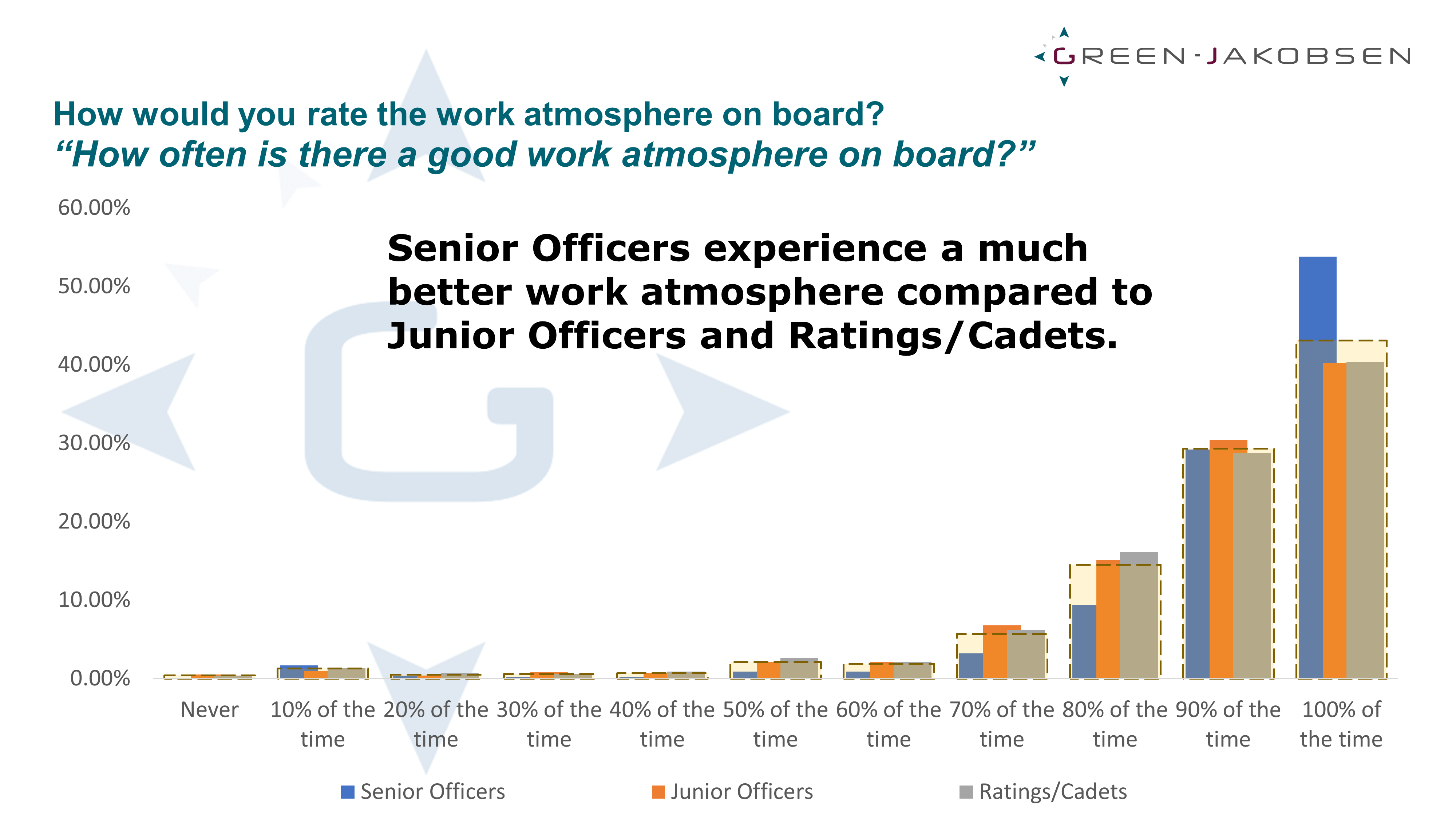In the maritime industry, where the environment is often harsh and hierarchical, ensuring the psychological safety of the crew is crucial. But what exactly is psychological safety, and how can you/your company make the best use of it to benefit ship operations and crew well-being?
What is psychological safety? And why is it a silent threat?
Psychological safety is an environment where individuals feel secure enough to take risks, express their thoughts, and voice concerns without fear of negative consequences or judgment. For seafarers, this means feeling comfortable speaking up about safety issues, suggesting improvements, or admitting mistakes without risking their position or reputation.
Psychological safety is considered a “silent threat” because its absence is not always obvious. Unlike physical dangers like broken machinery, which have clear, visible signs, issues with psychological safety often show up as subtle signs like stress, anxiety, and lack of engagement. These can be harder to notice but can greatly impact the crew’s performance and safety (Nembhard & Edmondson 2006).
Turning psychological safety into an advantage
When psychological safety is visible and felt, crew members are more likely to report safety concerns and near-misses. This proactive reporting helps identify and resolve potential hazards before they cause accidents, improving overall safety.
A psychologically safe environment encourages open communication and collaboration. Crew members are more willing to share ideas, provide feedback, and work together towards common goals, leading to more effective problem-solving and innovation.
In a psychologically safe environment, crew members feel comfortable questioning decisions and providing input. This openness leads to a more thorough decision-making process, as it ensures that all relevant information and perspectives are considered. When crew members are not afraid to speak up, potential issues can be identified and addressed early on, reducing the likelihood of mistakes.
When crew members feel safe and valued, they are more engaged with their work. This increased engagement boosts overall performance, productivity, and job satisfaction, contributing to a more successful and efficient ship operation.
Fostering psychological safety on board
Creating a psychologically safe environment on a ship involves more than addressing issues as they arise—it requires actively cultivating a culture where crew members feel valued, heard, and secure. Psychological safety on board ensures that every crew member can voice safety concerns, suggest improvements, and admit mistakes without fear of reprisal.
The unique working conditions on vessels make crew interaction and communication critical for performance and safety. Leaders play a crucial role in driving performance by establishing and maintaining conditions of psychological safety. This is supported by the actual words of some of the seafarers we have interviewed:
❶ Leaders should set a psychologically safe atmosphere on board by modelling behaviours that promote openness and trust. When leaders demonstrate empathy, actively listen, and provide constructive feedback while valuing crew members’ input and concerns, they can create an environment where everyone feels respected and heard.
To illustrate this point, consider the following insight from a Junior Officer: “I think having a harmonious relationship among the crew on board will greatly improve the ship’s safety culture. This starts with management and officers reaching out to lower ranks, regardless of nationality. Power distance often causes division, negatively affecting safety.“
❷ Leaders must encourage and support open communication by using daily opportunities on board, such as during morning meetings and when discussing tasks, to allow crew members to share their concerns and ideas without fear. This approach helps the team work together more effectively, making use of everyone’s knowledge and insights.
As a Rating puts it: “Listen to the crew on how to do a job because we know how to solve the problems and have good experience.”
❸ Leaders must ensure that interactions across all ranks are respectful and that mistakes are viewed as learning opportunities rather than grounds for reprimand. Promoting inclusivity and addressing discrimination or bias promptly helps maintain a supportive and safe environment for everyone.
According to a Senior Officer: “Good friends and good team players are going to work well together. If the ship’s management team is good, it reflects on the crew; it’s an automatic reaction.”
The importance of regular check-ins and surveys
Regular check-ins and surveys are crucial for maintaining and improving psychological safety on board. These practices help assess the crew’s feelings about the work environment and reveal any hidden issues related to psychological safety.
At the team level, frequent one-on-one or team meetings give crew members opportunities to share their concerns, provide feedback, and discuss challenges they face. These interactions help leaders stay informed about the crew’s well-being and address issues before they escalate.
On individual and organisational levels, surveys allow crew members to express their opinions and concerns confidentially. This anonymity encourages more honest feedback, making it easier to identify areas where psychological safety may be lacking and take corrective actions.
At Green-Jakobsen, we have been closely following the factors that impact human performance, including psychological safety. This focus is reflected in the Crew Performance Diagnosis Survey.
The Crew Performance Diagnosis Survey serves as a vital tool for assessing crew performance concerning psychological safety factors. The survey results help determine how psychological safety impacts other performance factors and the overall performance of the crew.
The survey results provide data insights into how well the crew perceive their environment in terms of safety and support. High levels of psychological safety are often correlated with better performance outcomes, including higher levels of engagement, better communication, and improved safety practices. Conversely, low levels of psychological safety can reveal areas where improvements are needed to enhance overall performance.
 One of the interesting findings from the performance survey responses is that when asked, “How often is there a good work atmosphere on board?”, Senior Officers indicate experiencing a much better work atmosphere compared to Junior Officers and Ratings/Cadets.
One of the interesting findings from the performance survey responses is that when asked, “How often is there a good work atmosphere on board?”, Senior Officers indicate experiencing a much better work atmosphere compared to Junior Officers and Ratings/Cadets.
This could point to various factors impacting psychological safety. For example, communication and inclusivity practices might be more effective at higher ranks if Senior Officers experience a better work atmosphere. This finding underscores the need to enhance communication and inclusivity throughout all levels of the crew to ensure that everyone, regardless of rank, feels equally valued and respected. Additionally, if Senior Officers are not fully aware of the challenges faced by lower-ranking crew members or if there are barriers to open communication, they may not fully grasp the issues affecting the work atmosphere for Junior Officers and Ratings/Cadets.
Addressing these factors can lead to a more open, inclusive, and supportive environment, improving psychological safety for all crew members and enhancing overall performance and well-being on board.
By regularly evaluating psychological safety through a performance survey like this, the crew can identify trends, address issues proactively, and implement strategies to improve the work environment on board. This approach ensures that psychological safety is not just a theoretical concept but a practical element that influences crew performance and operational efficiency.
Epilogue
Turning psychological safety into an advantage requires commitment and effort from the top, starting from the shipping company’s office and reaching the vessels; psychological safety is a core part of an organisation’s culture and, therefore shall be supported and promoted. As analysed above, in all business sectors, including that of shipping, and the micro-environment of a vessel, the rewards of psychological safety are game changers. To gain these benefits, shipping companies shall prioritise regular check-ins and anonymous surveys to maintain psychological safety onboard and ashore, and proactively address any issues raised. By reviewing and enhancing psychological safety in the workplace, you can greatly improve both operational efficiency and crew well-being. We’re here to help you extract data insights and analyse them as well as understand the factors that impact psychological safety and overall human performance on board your vessels.
References
Nembhard, I. M. and Edmondson, A. C. (2006). Making it safe: The effects of leader inclusiveness and professional status on psychological safety and improvement efforts. Journal of Organizational Behavior, 27(7): 941-966.

































































